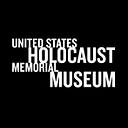The Man in the High Castle: More than Fiction
The world of The Man in the High Castle, is dark no matter what your standard — the Nazis won World War II, America is divided between the Germans and Japanese.
The Amazon Studios Emmy-award winning series, which recently made its second season available, is based loosely on the 1962 novel of the same name by the prolific American science fiction writer, Philip K. Dick (1928–1982). Dick’s literary creations inspired other work for the screen, including the Hollywood feature films: Blade Runner, Total Recall, and Minority Report.
The story creates an alternate universe, but it is the product of Dick’s own experience of the war and its aftermath, as well as his understanding of the Holocaust.
The Man in the High Castle begins in 1962 America. The Nazis already have eradicated the Jews, Gypsies (Roma and Sinti), and Bible Students (Jehovah’s Witnesses), and driven the Slavs “back” into Asia. In Africa, they have eliminated the native populations, recycling their body parts into industrial and consumer products, leaving behind nothing more than chemical heaps. Nazi Germany, in the midst of a succession crisis, seems to be moving toward the nuclear destruction of its erstwhile military ally, “racially inferior” Japan.
It is a false history of the world constructed out of Nazi lies and fictions.
In creating this scenario, Dick drew upon Holocaust history to frame his argument. The logical outcome of Nazi policies, as one character in the novel points out would be a “final holocaust” for everyone.
The Man in the High Castle is deeply rooted in Dick’s experiences in World War II America and his growing awareness of the Holocaust. These events, along with the Cold War, frame the work’s narrative.
Dick’s personal life provides important clues to understanding The Man in the High Castle. As a teenager in 1940s California, he avidly followed news of the war and was deeply shocked by the hatred directed at Japanese Americans after Pearl Harbor. At the time, Californians witnessed the forced removal of their Japanese-American neighbors to “relocation centers.” In the final year of the war, Dick ran out of a movie theater after seeing a newsreel showing American GIs using flamethrowers against Japanese soldiers hidden in foxholes.
When he began writing The Man in the High Castle in 1961, the arms race between the United States and the Soviet Union was in full swing, bringing with it the fear of nuclear annihilation. The civil rights movement was calling public attention to the chronic problem of racism and inequality in American society. And Germany and Japan became economic powerhouses.
The trial in Jerusalem of Adolf Eichmann, the SS bureaucrat who helped to implement the mass murder of 6 million European Jews, catapulted the Holocaust into international news. The trial spurred on Dick’s keen interest in Nazi Germany, which began during the war and expanded during his time at Berkeley, where he studied philosophy and German. In researching the novel, Dick consulted the recently published bestseller, The Rise and Fall of the Third Reich, by American journalist, William L. Shirer, as well as the diaries of propagandist Joseph Goebbels and probably the Nuremberg Trials of the major Nazi war criminals.
For Dick, the Nazis were not the sole proprietors of racism, bigotry, and prejudice; such views pervaded much of society. He gives voice to this through the character of Robert Childan, the antique shop owner who caters almost exclusively to Japanese clientele, resents kowtowing to his patrons, who can never understand western culture, even as they try to appropriate it. The Japanese, he avers, are mere imitators. He admires the Nazis for stopping the Slav “inundation” and preventing the Jews from running the world. Another character praises the Nazis for saving society from Communism. Whether they express voices from Dick’s past in wartime America or not, such views were still all too commonplace in the early 1960s.
Holocaust references, though perhaps not as numerous as in the novel, run throughout series. An early episode sees a central character traveling across the Midwest by truck. He drives into what appears, at first, to be a snowstorm. The flakes raining down are ashes from the incinerated bodies of mentally and physically disabled victims of the Nazi “euthanasia program.”
In a later episode, a powerful leader of the American branch of the SS, Obergruppenfuhrer John Smith’s is revealed to have a son who is diagnosed with a congenital debilitating disease; a death warrant in the Reich.
Another character is Frank Frink (Fink), a former artist turned metalworker, who tries to hide his Jewishness. His sister and her children are murdered by the Japanese Kempeitai, the Japanese military police, with Zyklon B, the killing agent of choice at Auschwitz-Birkenau. They are asphyxiated in a gas chamber disguised as a waiting room with a television and cremated. As Jews, they are deemed to be “enemies of the people.”
In Dick’s alternate history, the Holocaust never ends. The only hope lies in a mysterious work by the Man in the High Castle, which itself tells an alternate history. A history in which Hitler is defeated and the Allies prevail. The Nazis will do anything they can to suppress this work of “fiction.”
They are afraid because, as Dick knew, the truth has the power to remake the world.
Written by Steven Luckert, Ph.D., senior program curator at the US Holocaust Memorial Museum.
